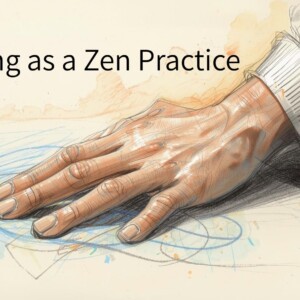
How to Use Waiting Time for Practice: A Zen Approach to Everyday Moments
Waiting is an inevitable part of life—standing in line, sitting in traffic, waiting for a reply, or being placed on hold. These moments can feel frustrating and unproductive. But in Zen, every moment is an opportunity to wake up. Even waiting—especially waiting—can become a powerful space for presence and awareness.
This article explores how to use waiting time for practice in the spirit of Zen, transforming idle pauses into meaningful moments of mindfulness.
The Zen Perspective on Waiting
In the Zen view, time is never wasted when we are fully present. Waiting isn’t a gap between “important” moments—it is the moment. The practice lies not in what you are doing, but in how you are being while doing it.
“When you realize nothing is lacking, the whole world belongs to you.” — Zen Master Sengcan
1. Shift Your Mindset: Waiting Is Practice
Instead of seeing waiting as time lost, reframe it as practice gained. It’s a built-in pause, a natural invitation to return to awareness.
Ask yourself:
-
Can I be fully here, even now?
-
Can I soften my resistance to this moment?
This simple shift turns irritation into insight.
2. Use the Breath as an Anchor
The breath is always available, and waiting offers the perfect chance to reconnect with it.
Practice:
-
Inhale gently through the nose
-
Exhale slowly through the mouth
-
Let each breath be a complete experience
Whether in a traffic jam or grocery line, three conscious breaths can bring you back to now.
3. Practice Sensory Awareness
Waiting time is an opportunity to wake up your senses:
-
Feel your feet touching the ground
-
Listen to the sounds around you without labeling
-
Notice colors, textures, and movements
-
Feel the temperature of the air on your skin
These small acts of observation pull you out of mental noise and into embodied presence.
4. Apply the Mantra: “Just This”
A helpful Zen phrase for waiting is: “Just this.”
-
Just this line
-
Just this stoplight
-
Just this breath
This mantra simplifies the moment and reduces inner resistance. You’re not trying to escape or improve the now—you’re simply meeting it as it is.
5. Practice Loving-Kindness
While waiting, use the moment to silently send goodwill:
-
“May I be calm.”
-
“May others here be well.”
-
“May this moment be enough.”
Even in a crowd of strangers, this quiet practice cultivates compassion and connection.
6. Let Go of the Clock
Waiting often creates stress because we cling to a schedule. Zen invites us to loosen that grip.
If you’re late, flustered, or stuck:
-
Acknowledge your emotion
-
Breathe into it without judgment
-
Say: “This is what time feels like now.”
Let go of the clock, and find peace in the present.
Everyday Examples of Zen Waiting
-
At the doctor’s office: Sit upright, focus on posture and breath
-
In traffic: Turn off distractions, notice your body, soften your grip on the wheel
-
In line: Stand tall, relax the jaw, notice surroundings without reacting
-
On hold: Use the moment to practice patience or gratitude for the service you’re about to receive
Final Thought: Don’t Fill the Gap—Feel It
When you stop treating waiting as a waste, you begin to see it as a gift. A Zen practitioner doesn’t wait impatiently—they wait mindfully, using each pause as an invitation to return to life.
So next time you’re caught waiting, don’t reach for your phone.
Reach for your breath.
And let the stillness between things become your path to practice.
🌿 Want to go deeper into Zen and mindful living?
Explore ZEN for LIFE — a gentle guide to bringing presence, simplicity, and calm into your everyday routine.
Now available on Kindle.
#ZENforLIFE #MindfulLiving #EverydayZen









この記事へのコメントはありません。